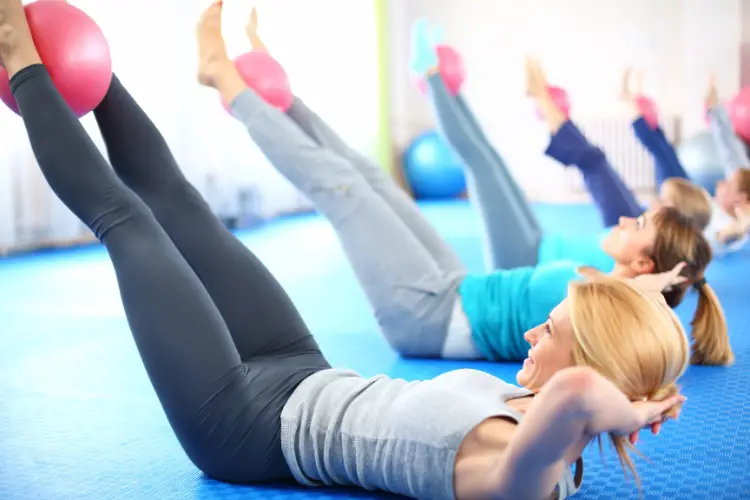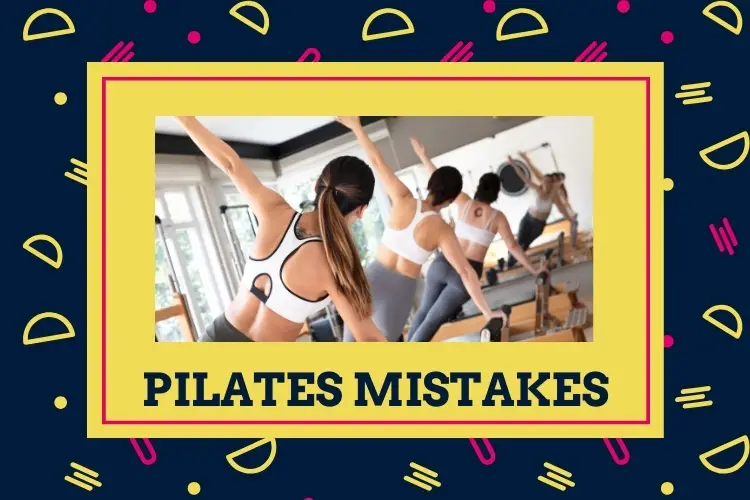If you’re in a Pilates class trying to maintain a plank position and your instructor reminds you to keep breathing, know that you are not the only one struggling.
Many beginners unintentionally hold their breath, a mistake that can impede your progress.
As you start practicing Pilates, it’s important to be aware of common pilates mistakes that can stop you from experiencing the full benefits of this practice. Not engaging your core properly, which is vital in Pilates, and rushing through movements without paying attention to proper form can make your workout less effective.
By gaining an understanding of correct body alignment and the importance of mastering the basics, you can build a solid foundation for your practice.
Let’s take a closer look at these typical blunders, so you can improve your technique and get the most out of your Pilates experience.
Neglecting Core Engagement
A frequent oversight in Pilates is neglecting to actively engage the core during each exercise. It’s quite common to become immersed in the motion and forget this essential component. Keep in mind, your core isn’t limited to your abdominals; it encompasses your back, sides, pelvis, and hips too. Neglecting to concentrate on these muscles means you miss out on the workout’s full potential and heighten your risk of injury.
Consider your core the central support of your body. It provides you with stability and balance.
So, in the midst of a leg lift or a stretch, take a moment to assess your core. Is it active? Are you drawing your belly button toward your spine? That’s what you should aim for.
Here’s a helpful suggestion: If maintaining core engagement is a challenge, decelerate your movements. Prioritizing speed over correct form isn’t beneficial. It’s preferable to perform a smaller number of repetitions with precision than to rush through many with poor technique.
Also, ensure you’re not holding your breath! Proper breathing is key for activating your core muscles. Inhale through your nose and exhale through your mouth, using your breath to enhance that core connection.
With consistent practice, engaging your core will become a natural part of your routine, allowing you to enjoy the full advantages of your Pilates practice.

Overlooking Proper Breathing
As you practice Pilates, it’s essential to give attention to the way you breathe, for it plays a significant role in your performance and the outcomes you achieve. Breathing isn’t merely an afterthought; it forms a core element of the practice that can sharpen your focus, command, and the effectiveness of each action. If your breathing isn’t in harmony with your movements, you may not be maximizing your session’s benefits.
Pilates focuses on the quality rather than the quantity of repetitions. Draw a deep breath to ready your body, and exhale during the most strenuous part of the exercise. This method is key for engaging your core, maintaining a stable posture, and granting you the strength to execute the exercises with precision.
It’s common to hold your breath while concentrating or exerting effort, but you should try to avoid this. Holding your breath can lead to needless tension and reduce oxygen delivery, which muscles rely on for endurance and repair. Keep your attention on a consistent breathing pattern that aligns with your movements, and you’ll observe a noticeable enhancement in your Pilates practice.
Rushing Through Movements
Mindful breathing can improve your Pilates practice, just as deliberately slowing down your exercises can ensure their effectiveness.
If you hurry through routines, there’s a heightened risk of faulty posture, which might cause injury and reduce the benefits of your workout. The essence of Pilates isn’t speed but rather control and precision.
Take the necessary time to learn the mechanics behind each movement thoroughly. Breezing through exercises likely means that you’re missing out on the meticulous technique that underpins the advantages of Pilates. Pay attention to the muscles you’re engaging and execute each motion purposefully. This intentional method is key to building the core strength that Pilates is celebrated for.
Be patient with your personal progress. While it might be tempting to match the pace of more advanced members in your class, keep in mind that Pilates isn’t a competition. Your body requires ample time to adapt to the new challenges it faces. If slowing down proves difficult, consider counting out loud with each movement to help set a steady pace and keep your attention focused.

Skipping Fundamental Techniques
Overlooking the essential elements of Pilates can compromise the integrity of your practice.
Beginners often want to immediately tackle more challenging exercises, but without a solid understanding of the key concepts, there’s a risk of injury and less effective training sessions. Pilates prioritizes the quality of each movement over the number or speed of movements.
The foundational principles such as correct alignment, centralization, focus, controlled movements, accuracy, breathing, and rhythm are critical to the effectiveness of Pilates. Ignoring these components can lead to missing out on the full advantages of each workout, akin to constructing a house without a solid base – it simply won’t be stable.
Invest time in learning to activate your core muscles properly, which is vital in Pilates. This involves more than merely drawing in your abdomen; it requires deep muscle engagement that provides support for your entire structure. Also, pay attention to how you breathe. Proper breathing facilitates movement control and enhances the overall efficiency of your exercise routine.
Be patient with your progress. Gaining proficiency in the basic movements will equip you with the strength and skills needed to move forward in a safe and more impactful manner. Your dedication to mastering these essentials will be rewarding, as you’ll become skilled in Pilates, minimize the chance of harm, and make the most of each training opportunity.
Ignoring Body Alignment
Neglecting the correct alignment of your body during Pilates can compromise your practice and increase the risk of injury.
It’s important to be mindful of your body’s positioning throughout each exercise. Incorrect alignment prevents you from engaging the intended muscles and diminishes the effectiveness of your workout.
You may believe you’re executing an exercise properly, but if your shoulder is raised or your back is curved improperly, you risk muscle strain or discomfort. Pilates focuses on controlled and precise movements, not on performing exercises hastily. Hence, it’s important to heed your instructor’s guidance and periodically review your own posture.
For those practicing at home, a mirror can be a helpful tool to examine your stance. Check whether your hips are even, your spine is in a neutral position, and your shoulders are relaxed and lowered. Minor modifications can have a significant impact. Take your time with each movement and confirm that every part of your body is correctly positioned.
Maintaining proper alignment not only helps in building strength correctly but also minimizes the chances of getting hurt, ensuring a secure and productive Pilates experience.

Conclusion
As you embark on your Pilates journey, it’s essential to activate your core muscles, practice proper breathing, pace yourself, focus on fundamental movements, and ensure correct body alignment.
Steering clear of these typical errors will help you reap the full rewards of your sessions. Keep a mindful and patient approach; your consistent effort will lead to improvements.
Confidence in your abilities is key!

